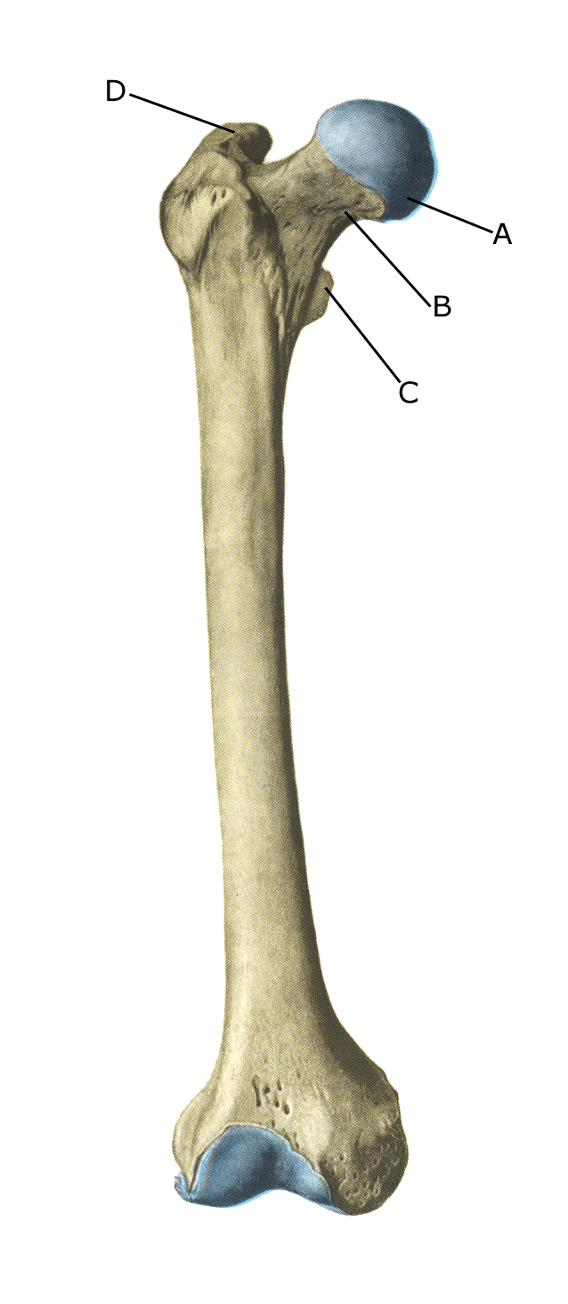Anatomy
 The hip joint consists of the acetabulum and the femoral head (caput femoris). It is attached to the femoral neck (collum femoris). Between the femoral head and the femoral neck is the growth zone (epiphysis).
The hip joint consists of the acetabulum and the femoral head (caput femoris). It is attached to the femoral neck (collum femoris). Between the femoral head and the femoral neck is the growth zone (epiphysis).
Femoral head
A. Caput femoris
B. Collum femoris
C. Trochanter minor
D. Trochanter major
Cause
The cause of femoral head slippage in the growth zone is unknown, but is more common in overweight people. The condition most commonly affects boys aged 11-16 years. Boys are affected twice as often as girls. Nearly half of the cases are bilateral.
Symptoms
Usually, there is no trauma and there is often only mild pain and fatigue in the hip at first. Later, the pain worsens, provoked by movement and strain. There is often lameness and very frequently rotational restriction in the hip joint.
Sometimes the pain is instead felt in the knee, groin and thigh. Unprovoked knee pain in young teenagers therefore raises suspicion of epiphysiolysis of the hip.
Examination
It is important to get a medical examination and diagnosis as soon as possible, as this is crucial for a good treatment outcome. During the examination, gait and rotation of the hip will be assessed.
Any suspicion of epiphysiolysis should be urgently supplemented by X-ray of both hip joints including oblique images (Lauenstein’s projection) (See X-ray of epiphysiolysis). As X-rays can miss the earlier stages of epiphysiolysis, it may be necessary to supplement with ultrasound and MRI scans.
Treatment
The treatment should start as soon as possible and is primary offloading, which should start at the time of suspicion. More than 80% require surgery to surgically reposition and fix the joint head (Panuccio E, et al. 2022).
Rehabilitation
Mængden af motion og genoptræning, der kan tillades, afhænger helt af sygdommens sværhedsgrad og behandling, og derfor bør al genoptræning ske i tæt samarbejde med de læger, der styrer behandlingen.
Complications
Prognosis depends on the degree of slippage, but most people have a good prognosis. The condition carries the risk of permanent damage to the head of the joint (caput necrosis), with osteoarthritis of the hip joint as well as shortening of the leg and reduced mobility of the hip joint. If no progress is made, you need to consider whether the diagnosis is correct.
In particular, you need to consider
- Bacterial infection of the joint (pyartron)
- Fluid accumulation in the joint
- Calve-Legg-Perthes disease
- Inflammation of the muscle attachment at the growth zone of the sitting bone
- Inflammation in the growth zone around the hip
- Inguinal hernia
- Bone disease (Yagdiran A, et al. 2020).
